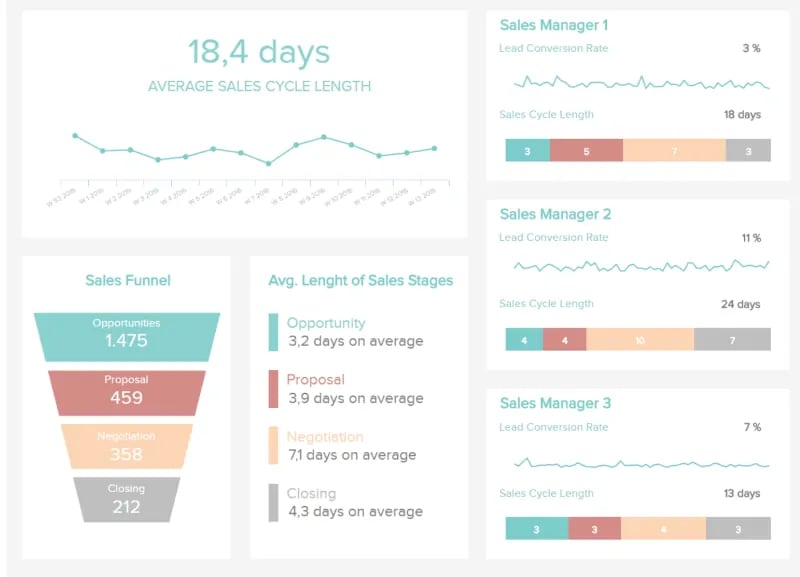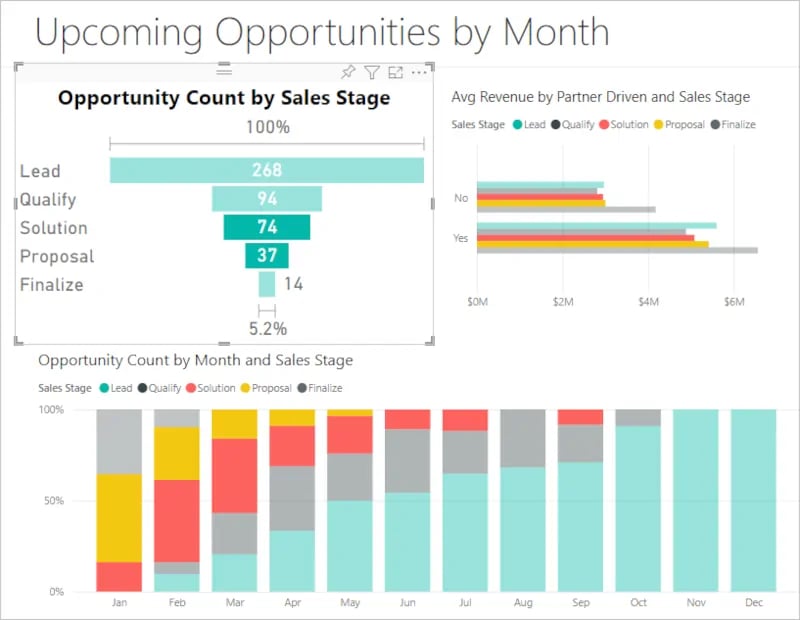A sales pipeline is a visual snapshot of the journey from a potential Lead to a confirmed Sale. It will visualize every step in your sales process. Your sales pipeline will reflect the buyer’s journey — showing you where your leads, prospects, and existing clients are in the pipeline to conversion.
Every business operates differently. There is no standard blueprint for a sales pipeline — it's unique to your business and the product you are selling.
In the most generic sense, the sales pipeline is about:
- Creating awareness
- Generating interest
- Driving action
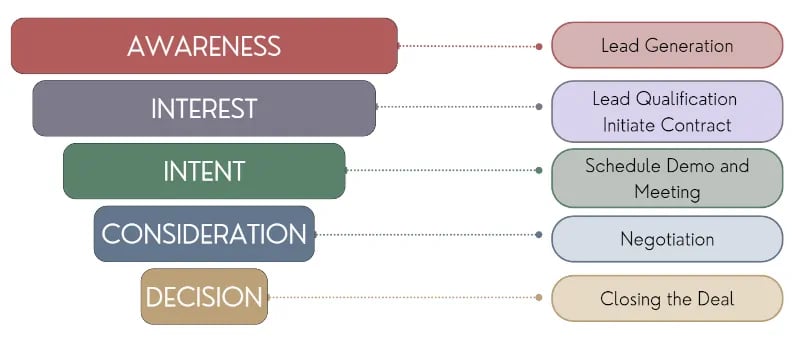
Sales pipeline stages explained
The sales pipeline can be segmented into the following stages:
1. Lead generation
Lead generation or sales prospecting involves attracting prospects and getting them interested in your product. It's a critical step in the sales process because it helps you identify and target individuals or organizations that may be interested in your product or service. You need to convert these leads.
Leads are generated through advertising, social media marketing, email marketing campaigns, networking, referrals, etc.
Lead generation is important because it helps you build a pool of potential customers to whom you can market your product or service. By identifying leads and targeting them with relevant messages, you can increase the chances of making a sale and growing your business.
2. Lead qualification and contract initiation
Lead qualification is the process of evaluating and filtering leads to determine which ones are worth pursuing.
You need to measure your leads across certain metrics:
- Does your lead fit your target market?
- Does your lead have the authority to make purchasing decisions?
- Does your lead have the budget to afford your product or service?
- Is the lead ready to buy now or in the near future?
This is an important step in the sales process because it helps you focus your efforts on the most promising leads and saves you time and resources by eliminating those that are not a good fit for your business.
Lead qualification helps you prioritize your leads and focus your sales efforts on those that are most likely to result in a sale. It can help you identify the best opportunities and increase your chances of success.
If the lead qualifies and is interested, you can initiate the contract process. This involves sending them proposals and quotes. Lots of back-and-forth communication to understand their problems and your capacity to solve them.
3. Meetings and demos
This step will start to narrow your pipeline. Meetings and demos will help bridge the gap between client expectations and the services you deliver.
This involves lots of communication and explanation. Meetings and demos help leads understand exactly how your product or service works and how it can help their use case.
You will have to explain the features and benefits of your product in detail and answer any questions or concerns your potential customer has.
Meetings and demos can effectively move the sales process forward and convince the potential customer to buy. They allow you to have a more in-depth conversation with the lead and provide the information they need to make an informed purchasing decision.
4. Negotiation
During the negotiation process, both parties may need to compromise to reach an agreement. The goal is to find a mutually beneficial solution that meets the needs and interests of both parties.
There are a few key things to consider when negotiating a sales deal:
- Know your limits: Have a clear understanding of what you are willing to offer and what you are not. This can help you avoid making compromises that are too costly or unreasonable.
- Understand the other party's needs: Try to understand what the other party values and what they are hoping to achieve in the negotiation. This can help you tailor your offers and make more persuasive arguments.
- Be flexible: Be open to making compromises and considering alternative solutions. This can help you reach an agreement that is satisfactory to both parties.
- Communicate clearly: Make sure to clearly and concisely communicate your needs and interests and actively listen to the other party's perspective. This can help you build trust and find common ground. Also, you can use UCaaS platforms that unite all communication channels within one unified platform to prevent miscommunications that negatively impact customer experience.
A good negotiation will build a good long-term business relationship with your customers, this is invaluable to your brand reputation.
5. Closing the deal
Closing the deal in sales refers to the final step in the sales process, where both parties agree to the terms of the contract, and the deal is finalized.
This typically involves signing a contract or placing an order and can also involve other activities, such as setting up payment terms or arranging for delivery or implementation. Hopefully, there is champagne involved.
Closing the deal is only the beginning of your relationship with your client. This is where your customer experience begins. You need to hand-hold them through the implementation of your product and follow up regularly.
This is why cultivating a good relationship is so important. It is a long-term game.
A sales pipeline's purpose is to track each opportunity's status and forecast future sales. By monitoring the progress of opportunities through the pipeline, sales managers can see where they are in the process and identify any bottlenecks or issues that may be holding up the sales process. They can also use the pipeline to identify trends and patterns that may indicate problems or opportunities.
Understanding why opportunities convert
Pushing your lead over the edge from a window shopper (opportunity) to a closed deal (sales!) seems like it requires the stars to align.
- The product or service meets the customer's needs: If the customer has a need or problem that your product or service can solve, they are more likely to make a purchase.
- The customer trusts the salesperson: Building trust with the customer through effective communication and relationship building can increase the chances of a sale.
- The price is right: If the customer perceives the price of your product or service to be fair and reasonable, they may be more likely to make a purchase.
- The customer has the budget: If the customer can afford your product or service, they may be more likely to make a purchase.
- The timing is right: If the customer is ready to make a purchase now or in the near future, they may be more likely to convert.
- The customer is influenced by incentives or discounts: Offering incentives or discounts can make your product or service more appealing to the customer and increase the chances of a sale.
Understanding areas of pipeline friction and leakage
The process of converting leads to customers is always complex. Some factors leading to a lead falling out of the pipeline are within your control, while others aren’t.
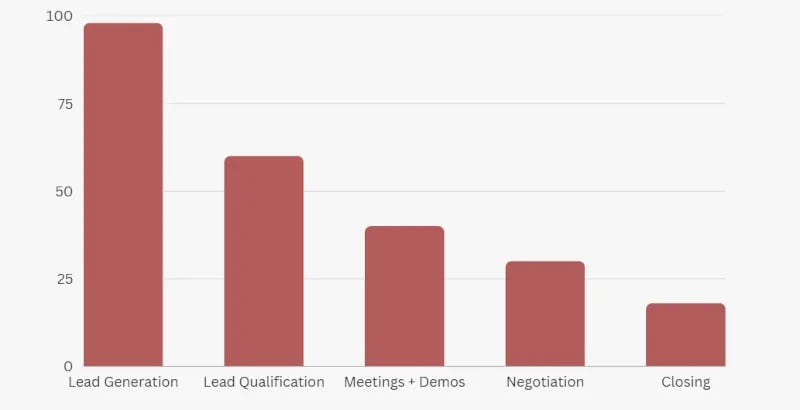
Leakages happen at different stages of the pipeline. As a sales leader, you must identify these points of friction, categorize them and investigate the reasons for the leaks.
Watch out for these common reasons sales pipelines get leaky:
Leakage at the top of the pipeline: Awareness level
- Poor quality leads: If the leads you are generating are not a good fit for your product or service, or are not interested in what you are offering, they are less likely to convert into sales.
- Lack of follow-up: If you don't follow up with leads in a timely manner, they may lose interest or pursue other options.
- Ineffective communication: If you are not effectively communicating the value of your product or service to leads, they may not see the benefit of making a purchase.
For example, If no one is seeing your message because Google detected it was entirely AI-written then it would clearly be ineffective.
- No clear CTA (call to action): If you don't give leads a clear next step or call to action, they may not know how to proceed or may not be motivated to take action.
- Competition: If there is strong competition for the lead's business, it may be more difficult to convert them into a customer.
Leakage around the middle: Consideration and negotiation level
- Lack of fit: If the lead is not a good fit for your product or service, or does not have a need for what you are offering, they may not proceed with the sale.
- Lack of budget: If the lead does not have the budget to afford your product or service, they may not be able to proceed with the purchase.
- Lack of authority: If the lead does not have the authority to make purchasing decisions, they may not be able to proceed with the sale.
- Unclear or unrealistic expectations: If there is a misalignment of expectations between you and the lead, they may not proceed with the sale.
- Competitive offerings: If the lead is considering other options and your product or service is not the top choice, they may not proceed with the sale.
Leakage at the bottom end of the pipeline: Closing level
- Unresolved objections: If the lead has objections or concerns that are not addressed or resolved during the negotiation process, they may not proceed with the sale.
- Unfavorable terms: If the terms of the deal are not favorable to the lead, they may not proceed with the purchase.
- Lack of trust: If the lead does not trust the salesperson or the company, they may not proceed with the sale.
- Change in circumstances: If the lead's circumstances change (e.g., budget constraints, change in needs), they may not proceed with the sale.
Pipeline management strategies for sales leaders
1. Map out the sales funnel
Creating a picture of your sales funnel that accurately reflects your sales process will be the most important. This will be unique to your product and process. To map out your sales funnel, you will have to:
- Define each stage in your sales process step-by-step, from potential lead to sale. Understand what each step means in context to your product.
- Identify the criteria that need to be met before the lead moves to the next stage.
- Add relevant data — you want to see where the leads are coming in and at which stages they leak out.
- Assign the probability of closing to each stage to help in identifying bottlenecks and friction points in the pipeline. This will also help with forecasting.
- Visualize the funnel — add easily understandable graphics to represent each stage and the relevant data insights.
- Track the progress of leads through the pipeline and constantly review, update and adjust the picture to reflect changes in the environment.
2. Analyze your pipeline — Be data driven!
So much of this sales process is about understanding your leads and forecasting closes. This requires data. And the data requires analysis. Data-driven decision-making is the most informed and practical way to drive growth. Data is your most powerful tool for insight and understanding.
(Let’s be honest, is there anything more fun to a sales leader than a presentation full of dancing graphs?)
So how do you analyze your sales pipeline?
- Collect the right data. Clean it! Filter out all irrelevant details, and keep what is useful and necessary. Calculate the probability of a close at every stage.
- Identify trends and patterns. These often indicate opportunities and highlight problems. This is essential for forecasting.
- Identify bottlenecks — points of leakage and friction.
- Determine the value of each lead so you can prioritize your efforts and allocate resources appropriately.
- Track performance in the context of different strategies and tactics. Measure all the relevant metrics. Percentages, drop-off rates, conversion rates, average deal sizes, pipeline velocity, everything.
- Use data-driven insights to make informed decisions and tweak your process to be more effective and efficient.
- Keep the data updated.
3. Investigate leaks
All funnels leak.
But knowing where, when, and why there is leakage gives you control over the problem. Investigating leakage in your funnel means asking the right questions.
- How big are the leaks?
- Which stages in the funnel are the leaks?
- What is the cause of the leak? Why are leads leaving?
- How much of the leak is fixable?
- How do we plug each leak?
4. Improve lead quality and lead nurturing
The quality of your leads is defined by how well you know your audience and your product.
You need to define your ideal customer. This is something your sales team and marketing team need to be on the same page with.
Focus your effort on targeting the right kind of leads that fit your defined buyer persona. Don’t waste your time and resources on leads that don’t fit the profile.
Using targeted content with the right long-tail keywords will bring in the right traffic — high-quality leads. This could include providing free and valuable content, being active and up-to-date on social media, using email marketing campaigns, etc.
Then you need to nurture these leads. Build a good rapport with them and help them trust you. Show them that you understand their problems and their pain points.
Develop a good relationship and reinforce that relationship by maintaining a connection — during and after your deal is closed. Maintaining a good relationship is important even if they do not close. Your audience should feel welcome back even if things didn’t work out.
There are several ways to nurture a lead, but many brands prefer to use methods like email marketing or newsletters. This method does require the lead to opt-in first, so it’s a good idea to explain the value they receive if they sign up for communication.
An example of this can be seen on the website of a leading LOTO Kit manufacturer, where they offer leads the latest information on sales and new product releases via email. This is a great value-driven way of securing valid email addresses.
5. Use the right tools
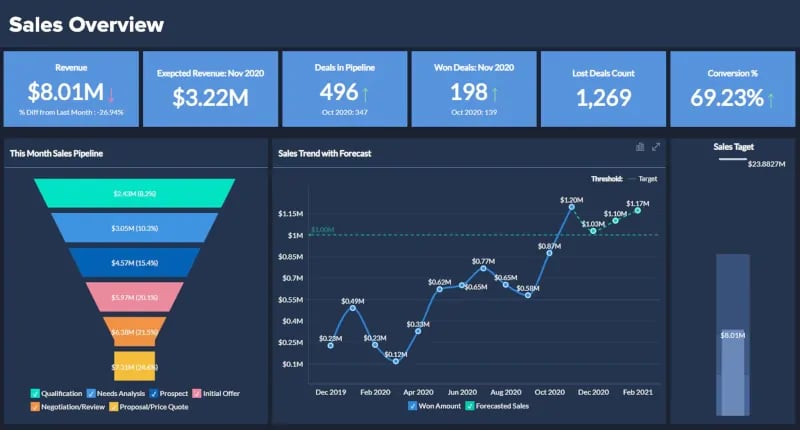
You can win at sales with marginal improvements. Fractions of a percentage. Choosing the right tools will help with that.
This means choosing the right CRM platform. You need to optimize for:
- Efficiency — to help streamline your sales pipeline. You need to minimize time spent on menial administrative tasks and focus on high-value activities.
- Accuracy and data collection — because you need to track and manage customer interactions. Important information cannot get lost. Your insights should be accurate. The data collected should be stored safely and securely.
- Insight and analysis — to help better understand your customers and your pipeline. The analysis provides valuable insights that are important to make more informed decisions.
- Collaboration — your team should be able to communicate effectively and share information smoothly so that collaboration becomes easier.
- Compatibility and integration — the tools you use should integrate smoothly with all the other software you deal with in your business. Connecting multiple systems is becoming easier with APIs. Checking compatibility across all the software, you use will ensure smooth functioning across all systems.
Picking the right platform requires you to diagnose your system and products and identify exactly what you need in CRM software. Your criteria should allow you to:
- Track leads and lead activity, customer base, opportunities, closing rates, pipeline velocity, conversion rate, etc.
- Offer connectivity between teams
- Manage relationships
- Customize to fit your use case
- Easily automate tasks
- Organize business operations
- Easily adopt and use for your sales team
- Protect your data
- Access across all devices
- Be compatible with your software
6. Keep testing
You need to constantly experiment with your process — in a controlled way while tracking your results at each iteration. This will help you understand what works and what doesn’t. Sometimes it’s the tiniest things that are the most significant.
Testing will also help you clean out your sales pipeline — eliminate all the redundancies. It will ensure that your data is up-to-date and accurate.
The sales process is dynamic. You should constantly adapt your strategy to new data, to changes in the environment, etc., and compare the results. This will ensure that you are always improving.
A smooth functioning sales pipeline is no longer a pipe dream
Understanding your product and your audience is the key to an effective sales pipeline.
Your pipeline is bound to have leaks and friction points, but minimizing the causes of these leaks on your end is crucial.
This is only possible when you commit to constant improvement by being data-driven, using the right software, and constantly testing. This will help fix your leaky pipelines before they start dripping hard-earned revenue.


